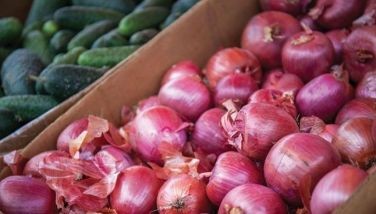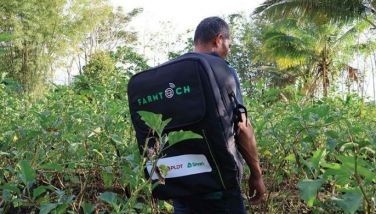PCA localizes production, purchase of salt fertilizer
MANILA, Philippines - The Philippine Coconut Authority (PCA) has taken steps to localize the production and procurement of salt fertilizer, substituting imports from Australia.
PCA administrator Euclides Forbes said the Philippines imports between 800,000 50-kilogram bags to 900,000 50-kilogram bags of salt fertilizer from Australia. The PCA then bids for the supply of salt fertilizer, spending around P500 million annually.
The agency provides salt fertilizers to coconut farmers under its Salt Fertilization Program (SFP), a component of PCA’s drive to increase domestic coconut production.
Forbes said the agency has begun tapping several provinces for supply of salt fertilizer.
The PCA, for instance, recently signed a memorandum of agreement with the provincial government of Palawan for the supply of 300,000 bags of salt fertilizer annually beginning 2015, provided the product meets the minimum specifications set by the PCA.
Forbes said the local government of Palawan, through governor Jose Alvarez, agreed to put up salt beds for the production of salt fertilizers. The provinces also agreed to put up nurseries for coconut seedlings that would be used for replanting in the province.
Several coconut cultivation areas in Palawan were also damaged by Typhoon Yolanda which hit the Visayas in November 2013.
“This will be part of their cash-for work program,†Forbes told The STAR yesterday.
The salt fertilizer produced in Palawan would be bought by the PCA at a minimum price of P300 per 50-kilogram bag through government-to-government procurement.
“These moves intend to revive the salt-production industry locally, thus creating jobs in the province,†said Forbes.
He said PCA is forming partnerships with more local government units to produce salt fertilizer.
“We are now looking at other provinces in western Philippines like Mindoro Oriental. Eventually we can localize the production of salt fertilizer,†said Forbes.
PCA said using agricultural-grade salt to fertilize trees could increase the yield of coconut trees by as much as 25 percent during the first year of application, and by 50 to 100 percent in the second and third year of application.
It is the cheapest and best source of chlorine which helps increase coconut yield and boosts the tolerance of trees to drought. It also boosts resistance to pests and diseases.
After Super Typhoon Yolanda demolished 10 percent of the country’s coconut tree population, the local coconut industry is confronted with a 13.5-percent decline in domestic copra supply until new trees are planted and ready to bear fruit.
It takes between six to eight years for coconut trees to mature and bear fruit.
- Latest
- Trending




























